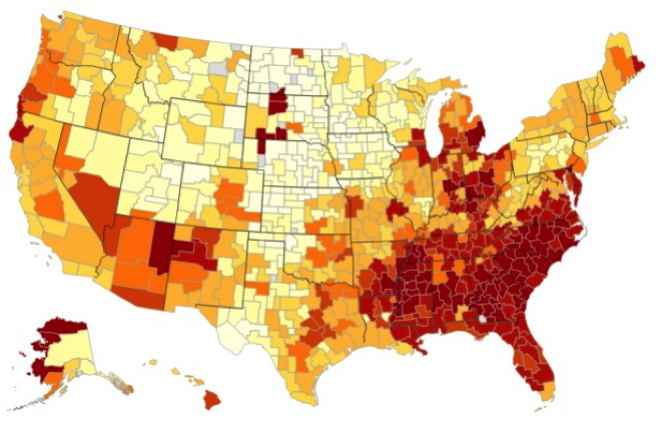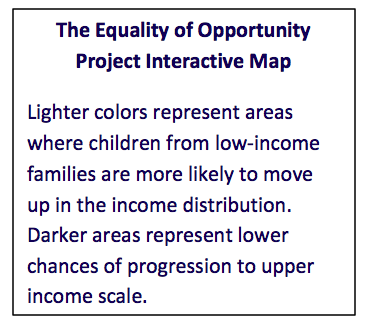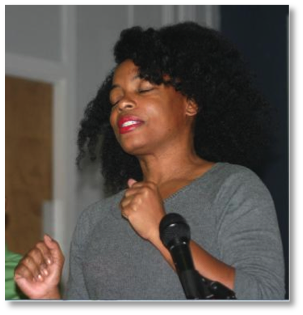Forum on Gun Violence Notes Economic, Education Connection
2014/01/03 – Participants at a December public discussion on gun violence in the community could not keep from bouncing the conversation into the realm of economics.
Tougaloo College hosted the event, joined by college students and President Beverly Wade Hogan, Nsombi Lambright from the Jackson City NAACP branch, Southern Poverty Law Center Senior Advocate Jed Oppenheim, community activist Jason Thompson, Tougaloo Associate Professor S. Nicole Cathey, and professional actress Aunjanue Ellis, among others.
Students participating in the event intrinsically seemed to understand that the African-American community was comparatively more interested in restricting gun availability than majority-white communities. One student opined that this was because black communities routinely caught the brunt of gun violence, whether from inside the black community or outside in white neighborhoods. Panelists and students were still stinging from the recent shooting death of an African-American Michigan woman who had been begging for assistance in a suburban Detroit neighborhood after a car accident. (Michigan prosecutors charged Theodore Paul Wafer for second degree murder for shooting the 19-year-old unarmed woman in the face last month.)
“Our people are being killed every day,” said Ro’chelle Williams. “There are young people being shot and killed and their bodies being thrown out in the middle of the street.”
Lambright distributed Know Your Rights materials to students to help keep youth safe in potentially dangerous situations, but students said they felt that a by-product of Mississippi’s Stand Your Ground Law actually dictates to young African American men how to behave around whites so that they don’t become victims.
The forum, advertised as an assembly “on Mississippi’s Open Carry Law,” actually wound up debunking some of the myths surrounding the new law. Oppenheim explained that the new law, passed during the last legislative session, only clarified an earlier law the state already had put on the books—a law allowing state residents to carry firearms, without a permit, in areas not prohibited by property-owners.
Gov. Phil Bryant told reporters earlier this year, immediately after the Mississippi Supreme Court upheld the open carry gun law in August, that the state constitution already required no permit to openly carry a gun in 1890. If anything, the open carry gun law serves to bring renewed interest in Mississippi’s overly lax gun laws. Mississippi clocked in at No. 2 in terms of the nation’s gun murder rate in 2010.
The group session offered a variety of opinions regarding violent crimes—some of them conflicting. Oppenheim cited federal statistics revealing that violent crime was actually on a slight decline on a national, statewide and municipal level. Senator John Horhn, however, claimed he had “never seen anything” like the recent increase in incidences of violence.
Oppenheim suggested Horhn might have been including non-violent crime in his assessment, such as property crime, which statistically rises during times of economic recession.
It was the economy that took center stage in the debate early on, in fact. Horhn said this was not an illogical jump considering that the frequency of gun-related crime in minority-majority areas was in apparent lock-step with the staggering degree of economic depression plaguing those same communities.
“We need to start looking at the lack of (economic) opportunity, which is the real issue,” said Oppenheim. “If we’re not talking about that then our legislators aren’t talking about that, which they’re going to continue to do as long as we’re talking about the open carry law.”
Many panelists, such as Division of Social Science Dean Michael Williams, pointed out that state leaders needed to sufficiently invest in their children to assure that the resulting adults wouldn’t be bogged down by poverty, debt and social insecurity.
Recent studies suggest he has a point. Upward mobility in the United States is stagnant, according to a report released earlier this year by the Equality of Opportunity Project (EOP). In fact, a child born to the bottom fifth percent of households in Jackson has only a 4.6-percent chance of growing up and entering the top fifth percentile. A kid in the Greenville area of the state only has a 3-percent chance of achieving the same kind of improvement. Things are looking even worse in the Memphis area, where a child in the bottom fifth percent in terms of income has only a 2.6 chance of ever seeing the top fifth percentile category.
Climbing from poverty to the middle class is harder in some regions of the country, with upward mobility being particularly stagnant in the slave states. Of the 11 states that comprised the former Confederacy, the odds of a child jumping from the bottom fifth of the income distribution to the top fifth percentile in adulthood were only 6.6-percent, compared to 8.9 percent for the rest of the nation.
An interactive map created by EOP economists—with red areas indicating lower degrees of upward mobility—shows economic stagnation splashing across the South like the bloody streak of a bullwhip. Slavery apparently left more than one kind of mark.

Source of map: http://www.equality-of-opportunity.org/

Report authors cited four factors as being strongly correlated with upward mobility rates: school quality, family structure, civic engagement, and the size and geographic dispersion of the middle class. Report contributing author Raj Chetty said in a July interview that residential segregation and an insufficient public education system were often the hallmark of the more socially stagnant areas.
“Take a place like Atlanta … it’s a very residentially segregated city, where low-income people are living in neighborhoods that are quite separated physically from higher income. And the public transportation’s not great. And so that was a common characteristic that we found of many places of low rates of upward mobility,” Chetty told NPR radio personality Tom Ashbrook. “The quality of schools for low-income kids is likely to be higher in a place where they’re living in neighborhoods integrated with higher income families because there’s going to be more funding for the schools, smaller classrooms, and better teachers. And we have evidence from other work that that kind of thing really matters for kids’ outcomes.”
Michael Williams offered the same argument regarding insufficient education funding in Mississippi.
“Education for education’s sake is not the key. We’re going to have to figure out, as young people, as old people, as community professionals, how to train our children to be holders of power,” Williams said.”
Source: NAACPMS Staff




